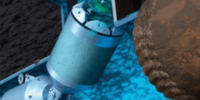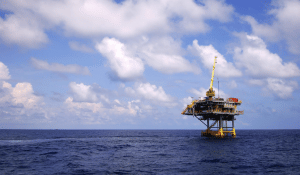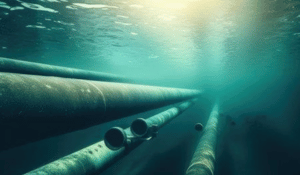2 min read
Inspection of Non-Piggable Pipeline for Lifetime Extension
Kate Aguilera Nov 2, 2023 1:04:25 PM

The Scope
Jee's client was operating a multi-phase oil production pipeline system beyond its original design life and therefore required an in-line inspection (ILI) to be carried out to verify the condition and confirm suitability for continued use and safe operation. The pipeline was designed without pigging facilities and had subsequently never been in-line inspected during operation.
Our initial scope was to review the pipeline cleaning and inspection philosophy to ensure the pigging operation was appropriate for the pipeline design and inspection requirements. During early stages of project planning, decommissioning of an associated tie-in well spool showed hardened barium sulphate scale deposition in the spool. External inspections of sections of the pipeline system showed that some areas exhibited significant bore restrictions due to scale, requiring a critical change to the pigging philosophy to include removal of hard scale rather than the originally anticipated waxy deposits.
Our scope subsequently grew to include design and detailed technical assurance of the revised pigging operation, working closely with the overall project delivery team who were carrying out topside modifications to install a launcher and receiver and associated pipework to the risers to enable pig passage.
The work involved defining the new overall pigging strategy and the revised requirements for pipeline cleaning. This included consideration of running very aggressive cleaning pigs or alternative methods of removing the scale such as replacing the most heavily scale-affected section of the pipeline system which was at a subsea spool.
We provided tender documentation for cleaning pig and ILI suppliers to tender against, providing the detailed scope of work for each vendor and the technical specifications required of their tooling.
We subsequently used our proprietary pig design best practice checklists to provide technical assurance of each pig and inspection tool design, including definition and witnessing of loop testing.
We also supplied engineers offshore to oversee the various phases of the pigging operation, providing on-site technical support to the execution team.
The Solution
A foam caliper pig was initially run well ahead of the planned ILI campaign to obtain a rough map of the restricted bore and critical scale locations. The run identified that the main scale-affected section was mostly contained within a single flanged subsea spool, which provided an alternative to extensive mechanical cleaning by replacing the spool.
We were mobilised to the facility to assist with the final cleaning and inspection operation which was carried out in a series of phases:
- Initial pipeline cleaning with foam and gel pigs to allow breaking containment subsea
- Subsea spool replacement to remove the worst affected scaled sections
- Further pipeline cleaning using brush and high-bypass pigs to prepare the line for the inspection tool
- Pipe gauging post-debris removal
- Inspection using an ILI tool
The Benefits
Despite the many project challenges associated with a non-piggable pipeline, problematic pipeline debris and changes to project scope, Jee worked closely with the client and other third parties to ensure a successful cleaning and inspection campaign. The ILI campaign provided the client with the pipeline wall thickness and defect data required, on which Jee subsequently carried out detailed defect assessments and future operations integrity assessments.



